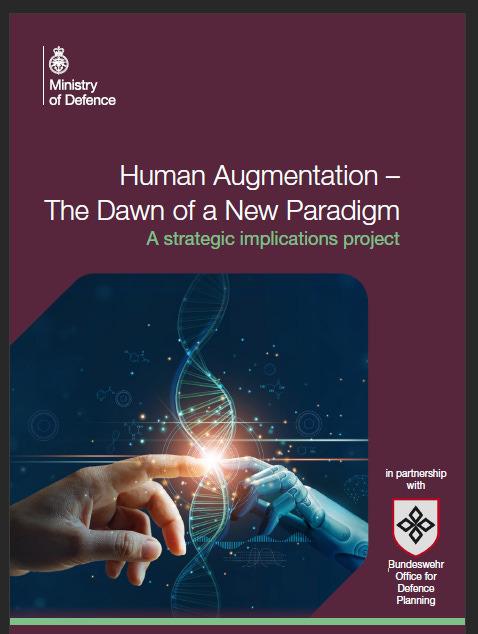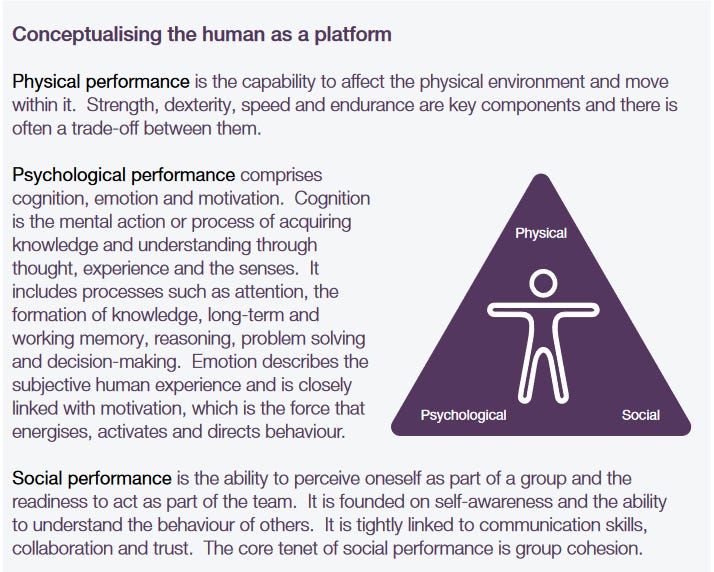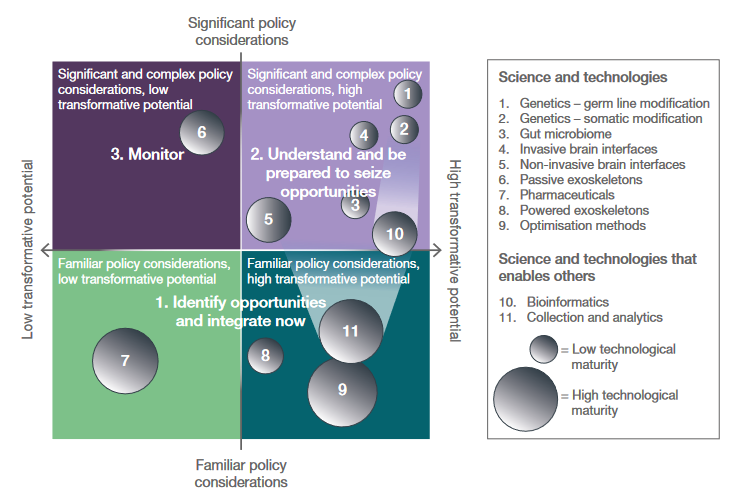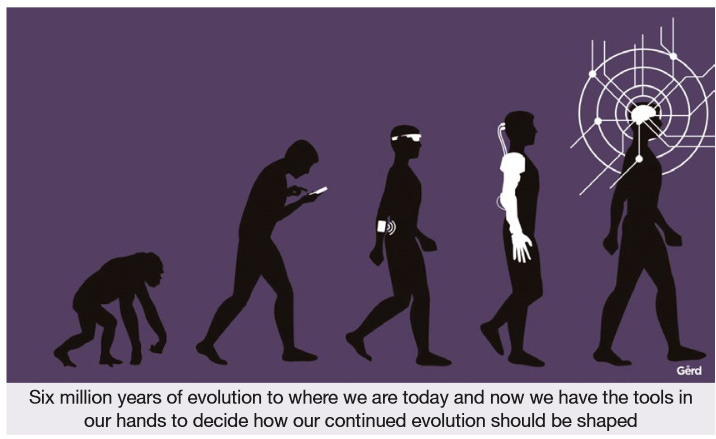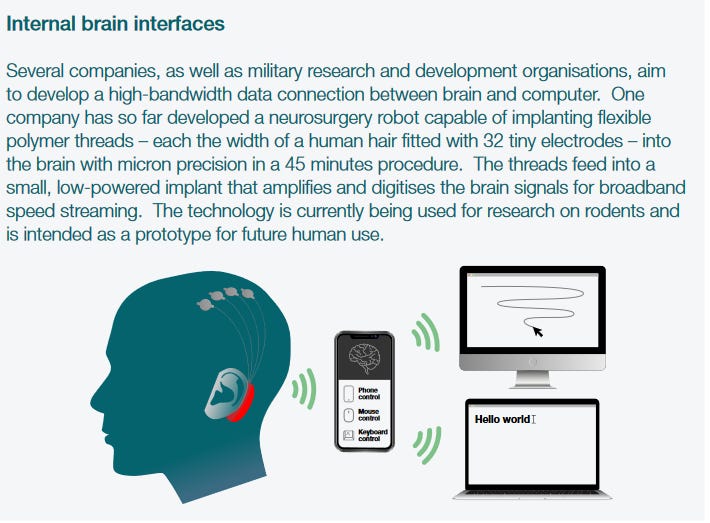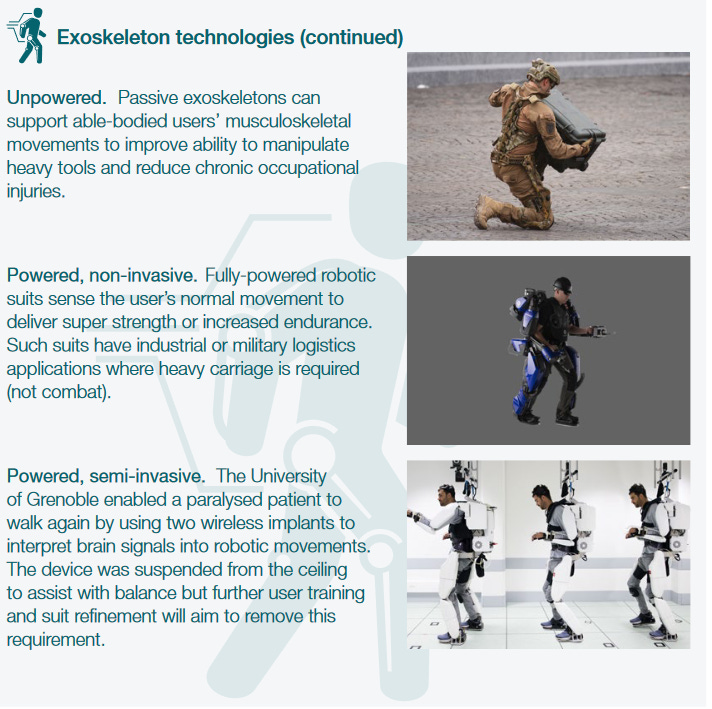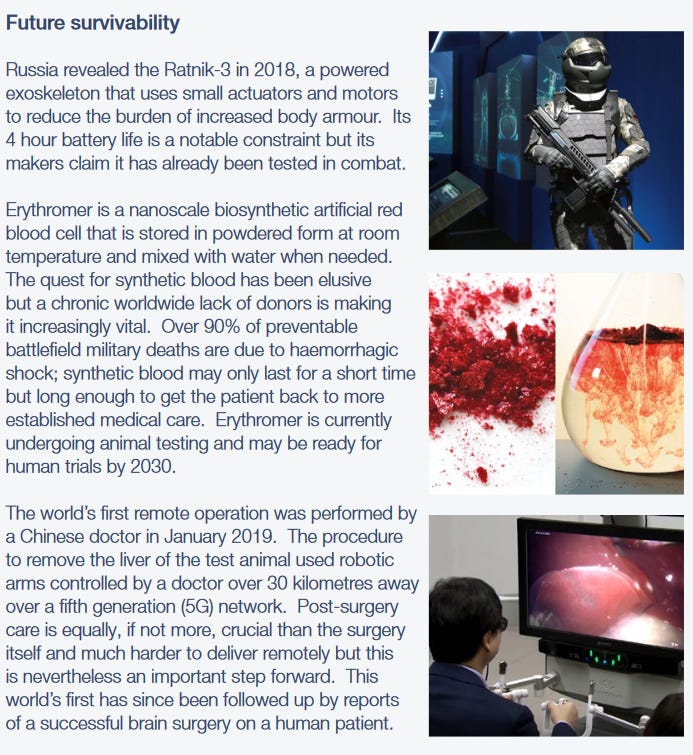Human Augmentation
Todd Callender just mentioned this publication of the UK Defense Department in my interview with him. It closely mirrors the many US documents I have previously discussed showing that Human Augmentation has been persued in the military sphere.
Here are many previous documents I have written about:
Techno Warfare 2035: United States Army War College Class of 2023 – Cyborgs, Genetic Engineering, Brain Computer Interface, Mind Control, AI Automated Targeting Weapons Systems
Rand Corporation Research Report: Plagues, Cyborgs and Supersoldiers – Human Body Is Now An Official Warfare Domain
NASA Future Strategic Warfare Compared To Current Events. Are We In A War Of Our Military Against Us – We The People?
Brain Computer Interfaces: US Military Applications and Implications
DOD Defense Nanotechnology Research And Development Program 2009 – Insights Into Development Of Self Assembly Nanotechnology
US Naval Institute 2021: Synthetic Bioweapons Are Coming – Emerging and Disruptive Technology Essay Contest–First Prize Sponsored by MITRE – Gene-editing advances pose a serious threat.
Cyborg Soldier 2050: Human/Machine Fusion and the Implications for the Future of the DOD
Homeland Defense & Security Information Analysis Center: Implantable Nanosensors: Bringing The Hospital To (Into)You
How Nanotechnologies Are Shaping The Future Of Warfare (Nanowerk)
National Nanotechnology Initiative Specifically Speaks of Covid 19 Bioweapons As “Nano Technology Enabled” And Plans Many More Nanotechnological “Vaccines”
This British document is very much in line with the concepts already posted previously. The human is degraded into a platform that can be hacked at will.
__________________________________________________________________________
“Thinking of the person as a platform and understanding our people at an individual level is fundamental to successful human augmentation.”
___________________________________________________________________________
It shows that there are technologies that could be integrated today with manageable policy considerations. The most transformative technologies (for example, genetics and brain interfaces) currently sit at a low level of technological maturity but we must be prepared for this to change quickly. Bioinformatics and collection and analytics (encompassing sensors, artificial intelligence-enabled processing) are particularly important enablers for other human augmentation technologies and warrant focused research and development attention.
We cannot wait for the ethics of human augmentation to be decided for us, we must be part of the conversation now. The ethical implications are significant but not insurmountable; early and regular engagement will be essential to remain at the forefront of this field. Ethical perspectives on human augmentation will change and this could happen quickly. There may be a moral obligation to augment people, particularly in cases where it promotes well-being or protects us from novel threats. It could be argued that treatments involving novel vaccination processes and gene and cell therapies are examples of human augmentation already in the pipeline.
As we were able to read in Cyborg Soldier 2050 – the dual use application of life sciences – meaning the weaponization of healthcare – is key to the overall development of the Cyborg warfare technologies. A close relationship of military with the health care sector is needed. Have we not seen this in the deployment of the COVID19 weapon of mass destruction called a “vaccine”?
Human augmentation is our first insight of what lies beyond today’s Information Age – the coming of the Biotech age. The Biotech age will see focus on the human grow. No longer will it be adequate to regard people merely as the means to operate the machine. The interdisciplinary nature of human augmentation will render our current Industrial Age model of Defence ineffective. Defence must consider how it reorganises to meet a future that will demand a human-centric approach to warfare where the person is armed with the capabilities to integrate fully into a single platform. Human augmentation is bringing about a securitisation of the life sciences. Defence will need to develop a more effective relationship with those who work in the life sciences as the dual-use nature of emerging human augmentation technologies becomes clear. Governments will need to work with the scientific community to establish a framework that safeguards and supports national security whilst supporting collaboration.
What is called rehabilitation technologies are key to creating the warfare applications of Cyborg soldiers. This ranges from bionic prostetics to brain computer interface. In other words, AI will be making warfare decisions through a human brain that can be downloaded with information. The only question is – who programs the AI?
Human augmentation will play a key role in reducing the risk of cognitive overload as warfare becomes faster, more complex and more congested. Bioinformatics are likely to play a key role in identifying commanders and staff with the right cognitive and adaptive potential for command and control roles. Brain interfaces linked to machine learning algorithms have the potential to rapidly accelerate the speed and quality of decision-making. Today’s rehabilitation tools: tomorrow’s enhancements – physical and mental rehabilitation may, in the near term, prove to be the front line of human augmentation in Defence. Advanced prosthetics to rehabilitate wounded personnel represent the cutting edge of robotics and the latest neurostimulation devices and pharmaceuticals have been used to treat post-traumatic stress disorder. Further development of these treatments will not only help to rehabilitate injured personnel, but they could also pave the way for future enhancement
In the image below you can see how the nanorobots in people’s brain are the receivers for AI control via 5G/ 6G frequency Grid. One image says it all:
The rich elites are driving much of the biotech life extension research and are shaping its military application through this pathway. Remember as Ray Kurzweil described, the goal is transhumanism and eventually the post human era.
Astonishing Darkfield Live Blood Footage Of Nano/Microrobots In C19 Unvaccinated Blood And What did Ray Kurzweil Say About Nanorobots And the Singularity?
“The Singularity Is Nearer – When Humans Merge With AI”By Ray Kurzweil. Nanorobots Replacing Every Cell In Our Bodies, Zombies, And Fusing Our Brains With AI.
There is a growing sense that we are moving towards a frontier of unprecedented opportunity to improve humanity, which means we can do more. The fields of biomedicine, neuroscience, synthetic biology, computation, material technology, biomechatronics and social sciences have developed at pace to make possible what used to be the preserve of science fiction. Notwithstanding significant ethical and legal challenges, the science behind these technologies has been proven and cannot be undone. The origin of many augmentation ideas of applications lies in the health care sector. Large technology and pharmaceutical corporations see the economic opportunity in human augmentation and are investing heavily in these technologies and rich elites are also investing huge sums to develop life extension technologies. These efforts will drive human augmentation development, making it more accessible. The key question is how societies will embrace it and adopt it and for what purpose.
Here we find the polymer threads and brain electrodes:
Nanotechnology
is the term given to those areas of science and engineering where phenomena that take place at the scale of individual atoms (dimensions in the nanometre scale) are used in the design, production and application of materials, structures, devices and systems. While there have been advances in some niche areas, overall progress has been slower than expected. This is principally due to concerns about the harmful effects of nanoparticles accidentally released into the environment and the siloed nature of science and engineering.19 Safety concerns is, however, likely to accelerate progress. Nanotechnological systems have significant potential for human augmentation technologies, for example, the use of energy or chemical transducing nanoparticles to enhance sensors or the production of bespoke surfaces that act as a neural interface for implants. Nano-systems have the potential to reduce the size of many human augmentation-related components. Longer-term possibilities include replacing organs with functionally equivalent or better systems, as well as adding new capacities, such as nano-blood.
Artificial intelligence
is perhaps the biggest technological wildcard. It is extremely likely that even current machine learning techniques will have a transformative effect on many areas (for example, medical diagnosis, surveillance, management and robotics). Artificial intelligence could allow software to be developed that could:
• perform calculations or simulations via a brain interface to free-up human brain
capacity;
• learn individual abilities and quirks to provide customised support and control of
enhancements; and
• enhance ethical decision-making, which may also have significant implications in a
military setting.22
It is likely that artificial intelligence will develop at a faster pace in the coming decades than it did in the past decade. Even if it were to ‘only’ advance at the present rate we should still expect a huge increase in ‘implementation capacity’ – the ability to design, develop, deploy and adapt new technologies, including those relevant to human augmentation.
Here is synthetic blood – Clifford Carnicom thinks that this has been deployed for decades on humanity and his research can be found at Carnicom Institute.
These are future projections. According to my research, many of these are in the process of being covertly implemented now. The vaccine market IS the Human Augmentation market. They said it themselves.
Disruptive steps in human augmentation technologies during the last decades have led to a situation where human performance enhancement is cheap, safe and practically available to all. Human augmentation is considered highly acceptable and seen as natural step in human evolution. Companies and nations are cooperating globally and invest heavily into human augmentation development. The adoption and development of human augmentation technologies was characterised by three major technological steps that happened in parallel in both the West and in the East from 2020 until today. The first disruptive step was the development of enhanced DNA modification technology in around 2035 which led to increased investment in research and development and growth in the human augmentation market. The second disruptive step, which occurred around 2040 was related to the development in artificial intelligence. The third disruptive step around 2045, saw the development of, what was in effect, a universal vaccine for all diseases. This led to global acceptance of human augmentation.
There is a lot more in the document but I will end with this quote:
Based upon what we know today, and if current predictions are correct, genetic modification has, by far, the greatest potential for human enhancement. According to the United States Defense Advanced Research Projects Agency (DARPA), genetic modification could be used to create super soldiers who ‘kill without mercy, do not get tired, do not show fear and behave more like a machine than a human’.

